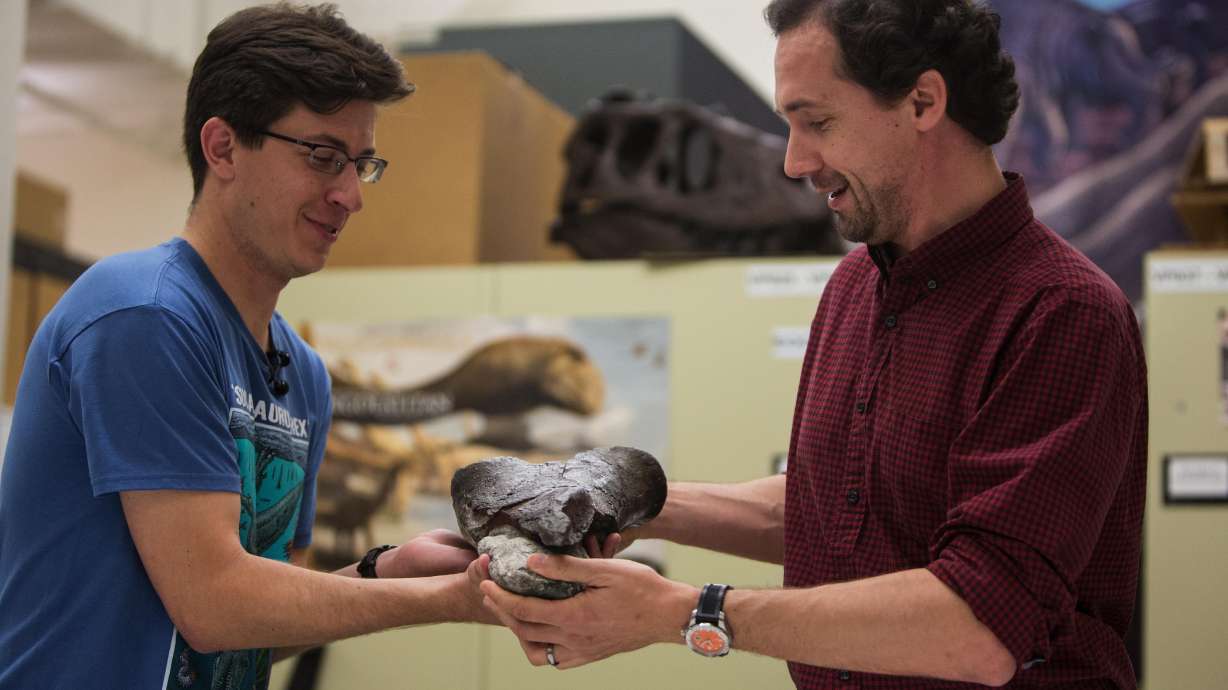Estimated read time: 2-3 minutes
This archived news story is available only for your personal, non-commercial use. Information in the story may be outdated or superseded by additional information. Reading or replaying the story in its archived form does not constitute a republication of the story.
SEATTLE (AP) — Scientists say they've discovered Washington state's first dinosaur fossil, an announcement that marks a unique find for the state and a rare moment for North America's Pacific coast.
Paleontologists at Seattle's Burke Museum said Wednesday that the 80 million-year-old bone fragment probably belonged to an older, smaller cousin of the Tyrannosaurus rex.
Dinosaur fossils are particularly rare along this side of the continent. Isolated skeletons and bones have been discovered at about only 10 sites near the shoreline.
Scientists think Earth's continents have shifted since dinosaurs roamed 240 million to 66 million years ago. They theorize that the area could have been underwater or otherwise uninhabitable.
Washington state's first dinosaur comes a little more than a year after a 16,000-year-old mammoth tusk was found at a Seattle construction site.
The bone fragment was uncovered at Sucia Island State Park on the San Juan Islands and comes from the late Cretaceous period, findings that were detailed online in the science journal PLOS ONE.
Researchers have been examining the nearly 17-inch-long, 9-inch-wide fragment for about three years. They say it probably came from a 3-foot thigh bone.
Scientists haven't been able to identify what specific dinosaur the fossil comes from, since it's just a fragment. But they're certain it belonged to a theropod — a group of two-legged carnivores.
The creature probably died on land and washed out to sea, where it took a beating, scientists say. The fragment was the only fossil uncovered at the site.
"This fossil won't win a beauty contest," Christian Sidor, the Burke paleontologist who co-wrote the journal article, said in a statement. "But fortunately it preserves enough anatomy that we were able to compare it to other dinosaurs and be confident of its identification."
Copyright © The Associated Press. All rights reserved. This material may not be published, broadcast, rewritten or redistributed.









